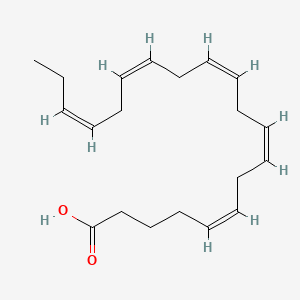| Liu Q et al. |
Dietary n-6:n-3 ratio and Vitamin E improve motility characteristics in association with membrane properties of boar spermatozoa. |
2017 Mar-Apr |
Asian J. Androl. |
pmid:26763547
|
| Manni A et al. |
Stearoyl-CoA desaturase-1, a novel target of omega-3 fatty acids for reducing breast cancer risk in obese postmenopausal women. |
2017 |
Eur J Clin Nutr |
pmid:28145413
|
| Bhatt DL et al. |
Rationale and design of REDUCE-IT: Reduction of Cardiovascular Events with Icosapent Ethyl-Intervention Trial. |
2017 |
Clin Cardiol |
pmid:28294373
|
| Mosca L et al. |
Usefulness of Icosapent Ethyl (Eicosapentaenoic Acid Ethyl Ester) in Women to Lower Triglyceride Levels (Results from the MARINE and ANCHOR Trials). |
2017 |
Am. J. Cardiol. |
pmid:27939227
|
| Mirabi P et al. |
The role of fatty acids on ICSI outcomes: a prospective cohort study. |
2017 |
Lipids Health Dis |
pmid:28109274
|
| Savolainen O et al. |
Biomarkers of food intake and nutrient status are associated with glucose tolerance status and development of type 2 diabetes in older Swedish women. |
2017 |
Am. J. Clin. Nutr. |
pmid:28903960
|
| Lefort N et al. |
Dietary Buglossoides Arvensis Oil Increases Circulating n-3 Polyunsaturated Fatty Acids in a Dose-Dependent Manner and Enhances Lipopolysaccharide-Stimulated Whole Blood Interleukin-10-A Randomized Placebo-Controlled Trial. |
2017 |
Nutrients |
pmid:28287415
|
| Alsharari ZD et al. |
Serum Fatty Acids, Desaturase Activities and Abdominal Obesity - A Population-Based Study of 60-Year Old Men and Women. |
2017 |
PLoS ONE |
pmid:28125662
|
| Muralikumar S et al. |
Probing the intermolecular interactions of PPARγ-LBD with polyunsaturated fatty acids and their anti-inflammatory metabolites to infer most potential binding moieties. |
2017 |
Lipids Health Dis |
pmid:28109294
|
| Boukhris S et al. |
The Potential of a Brown Microalga Cultivated in High Salt Medium for the Production of High-Value Compounds. |
2017 |
Biomed Res Int |
pmid:28612024
|
